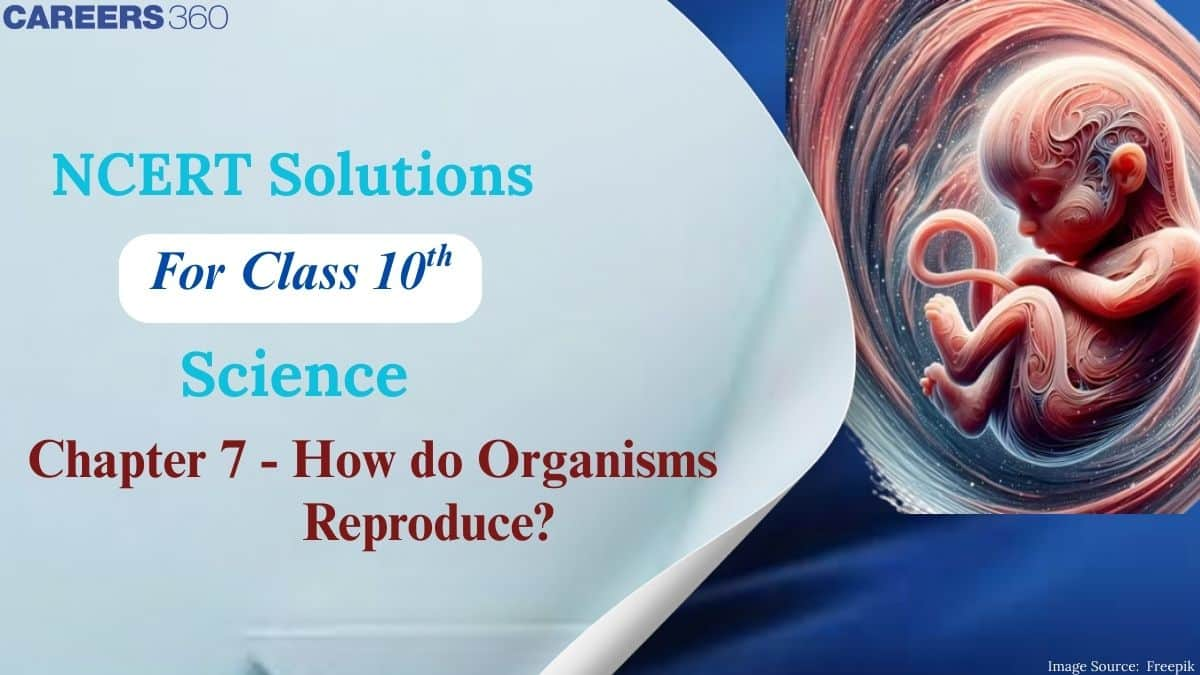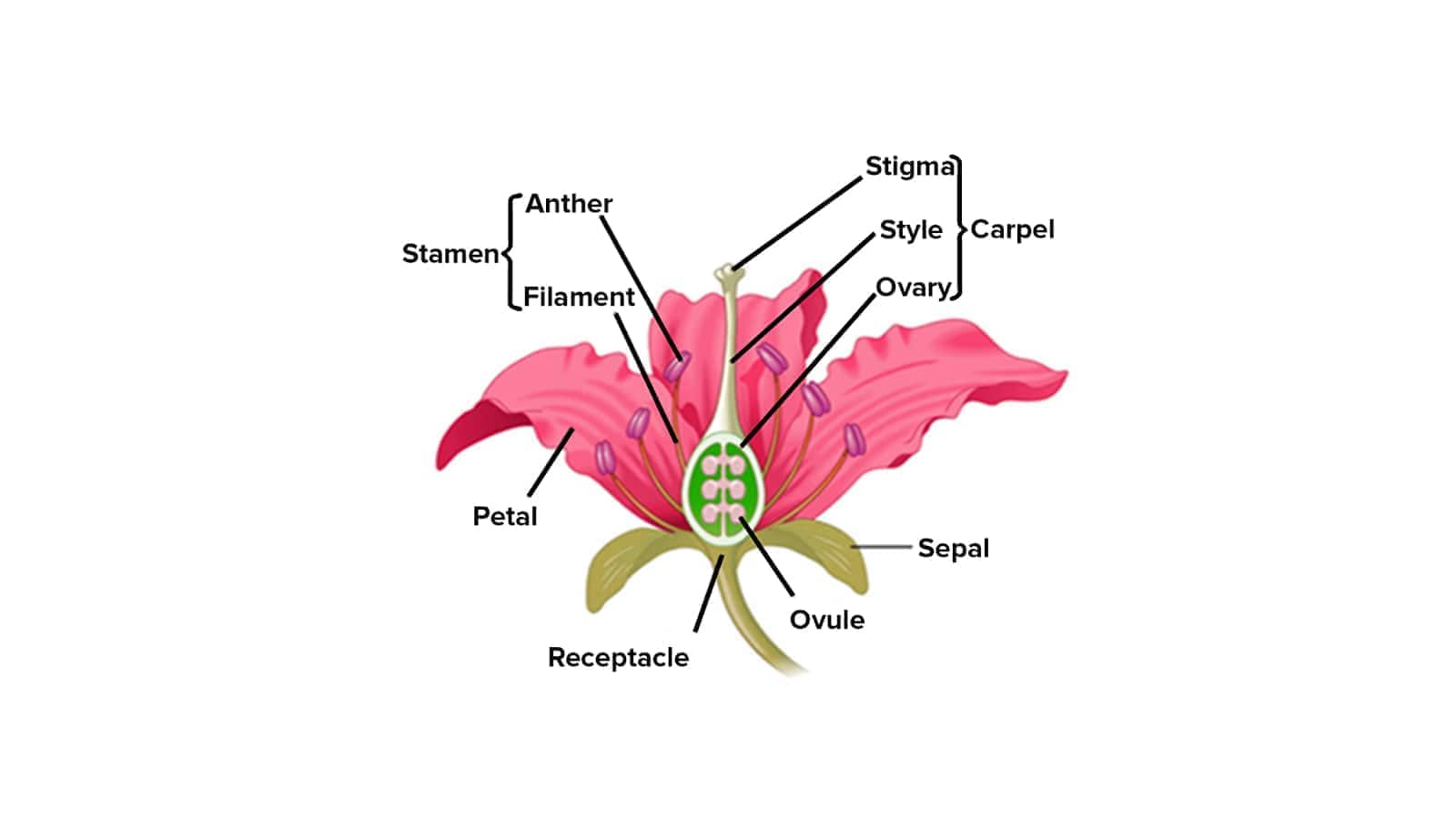The NCERT Solutions for Class 10 Science Chapter 7 How do Organisms Reproduce? deals with how living organisms reproduce. Students learn about two main types of reproduction: asexual and sexual. Asexual reproduction happens from one parent only and includes methods like budding, fission, etc. In sexual reproduction, two parents are involved to form a new organism. These NCERT Solutions are a simple way to understand the chapter properly and revise the points during the exam.
This Story also Contains
- Download How do Organisms Reproduce? NCERT Solutions PDF
- Access Class 10 Science Chapter 7 How do Organisms Reproduce? Solutions (Intext Exercise)
- Get Class 10 Science Chapter 7 How do Organisms Reproduce? Solutions (Chapter-End Exercise)
- Approach to Solve How do Organisms Reproduce? Class 10 Question Answer
- Main Topics of NCERT Class 10 Chapter 7 How do Organisms Reproduce?
- Question from NCERT Class 10 How do Organisms Reproduce?
- What Students Learn from How do Organisms Reproduce? NCERT Solutions
- NCERT Solutions for Class 10 Science
 NCERT Solutions for Class 10 Science Chapter 7 How do Organisms Reproduce
NCERT Solutions for Class 10 Science Chapter 7 How do Organisms Reproduce
How do Organisms Reproduce? Class 10 question answers include step-by-step explanations to make the understanding of the concepts easy. Students can also clear their doubts that come up while reading the book. During revision, it saves time because the answers are already explained clearly. All the answers are prepared by subject experts in a very detailed manner according to the latest NCERT guidelines.
Download How do Organisms Reproduce? NCERT Solutions PDF
The downloadable PDF of the questions with detailed answers is given below. The Class 10 Science Chapter 7 How do Organisms Reproduce? question answer allows students to understand how reproduction takes place and why it is important. Using the NCERT Solutions for Class 10 Science builds a strong foundation for higher classes.
Also Read
Access Class 10 Science Chapter 7 How do Organisms Reproduce? Solutions (Intext Exercise)
Topic 7.1 Do organisms create exact copies of themselves
Q1. What is the importance of DNA copying in reproduction?
Answer:
The importance of DNA replication in reproduction is as follows:
It allows offspring to inherit traits from their parents.
It helps keep the species' characteristics the same over time.
Small errors during DNA copying lead to variations within a species, which are important for adaptation and evolution.
Q2. Why is variation beneficial to the species but not necessarily to the individual?
Answer:
Variation is useful to a species as it allows some individuals to adapt to changes in their environment, which helps the survival of the species. As an example, if there were an outbreak of disease, those with genetic resistance would be able to survive and reproduce. Variation, though, is not always profitable to an individual, as certain differences could make survival more difficult for some organisms.
Topic 7.2 - Modes of Reproduction Used by Single Organisms
Q1. How does binary fission differ from multiple fission?
Answer:
The difference between binary fission and multiple fission is given below:
Binary Fission | Multiple Fission |
One organism splits into two daughter cells. | One organism divides into many daughter cells. |
Common in Amoeba. | Seen in some protozoa, like Plasmodium. |
Simple and quick division. | More complex division results in many individuals at once. |
Q2. How will an organism benefit if it reproduces through spores?
Answer:
Spore reproduction is a successful mode of survival and spreading in unfavorable conditions.
Spores can resist extreme conditions because of the thick covering walls.
They spread conveniently over distances, enabling the organism to grow in new areas.
Q3. Can you think of reasons why more complex organisms cannot give rise to new individuals through regeneration?
Answer:
Regeneration is common in simpler organisms but is limited in complex organisms because of their body structure.
Q4. Why is vegetative propagation practised for growing some types of plants?
Answer:
Vegetative propagation is a method of asexual reproduction used in plant cultivation of desirable traits on an economic scale.
Q5. Why is DNA copying an essential part of the process of reproduction?
Answer:
DNA replication ensures the passing on of genetic information during reproduction for species continuity and adjustment.
It makes children inherit traits from their parents, making species characteristics consistent.
Mutations in DNA replication help species adapt and evolve in changing environments.
Topic 7.3 - Sexual reproduction
Q1. How is the process of pollination different from fertilisation?
Answer:
Fertilisation and pollination are the two most important processes of plant reproduction. Pollination is the movement of pollen, whereas fertilisation is gamete fusion.
Pollination: Movement of the pollen grains from the male element (anther) to the female element (stigma) of a flower.
Fertilisation: Male and female gamete fusion, resulting in the formation of a zygote, which is a process after pollination.
Q2. What is the role of the seminal vesicles and the prostate gland?
Answer:
The prostate gland and seminal vesicles are significant in male reproduction due to their role in secreting fluids that support and carry sperm.
Seminal Vesicles: Secrete a fructose-rich fluid that gives energy to sperm and aids in semen development.
Prostate Gland: Produces a fluid that assists in sperm protection and stimulation and adds to semen volume.
Q3. What are the changes seen in girls at the time of puberty?
Answer:
Puberty results in various physical and emotional modifications in women as they grow into adults.
Q4. How does the embryo get nourishment inside the mother’s body?
Answer:
The embryo is supported by the placenta, which links it to the mother's bloodstream.
Q5. If a woman is using a copper-T, will it help in protecting her from sexually transmitted diseases?
Answer:
A copper-T is an intrauterine device (IUD) for contraception, but it does not offer protection against sexually transmitted diseases (STDs).
Get Class 10 Science Chapter 7 How do Organisms Reproduce? Solutions (Chapter-End Exercise)
Here are the step-by-step solutions to all the chapter-end exercise questions that help in revising the concepts. Students can use the Solutions of How do Organisms Reproduce? Class 10 to do their homework as well.
Q1. Asexual reproduction takes place through budding in
(a) amoeba.
(b) yeast.
(c) plasmodium.
(d) leishmania.
Answer:
Budding is a form of asexual reproduction where a new organism develops from a part of the parent.
The correct answer is Option (b) Yeast.
Q2. Which of the following is not a part of the female reproductive system in human beings?
(a) Ovary
(b) Uterus
(c) Vas deferens
(d) Fallopian tube
Answer:
Understanding the components of the female reproductive system is essential for biology.
The correct answer is Option (c) Vas deferens.
Q3. The anther contains
(a) sepals.
(b) ovules.
(c) pistil.
(d) pollen grains.
Answer:
The anther is an important part of the flower involved in reproduction.
The correct answer is Option (d) Pollen grains.
Q4. What are the advantages of sexual reproduction over asexual reproduction?
Answer:
Sexual reproduction produces variation due to the mixing of genes from two parents. This variation helps species adapt and survive in changing environments. It also reduces the chances of genetic diseases being passed on directly.
Q5. What are the functions performed by the testis in human beings?
Answer:
The testes have important functions in male reproductive health and function.
They produce sperm cells required for reproduction.
They secrete hormones, mainly testosterone, which control male characteristics and reproductive functions.
Q6. Why does menstruation occur?
Answer:
Menstruation is a natural phenomenon that occurs in women as part of the reproductive cycle.
Q7. Draw a labelled diagram of the longitudinal section of a flower.
Answer:
A labelled diagram of a flower typically includes various parts such as petals, sepals, stamens, and pistils.
Labelled diagram of the longitudinal section of a flower

Q8. What are the different methods of contraception?
Answer:
Methods of contraception prevent pregnancy and can be very diverse in method.
Barrier methods (such as condoms), hormonal methods (such as the pill), and intrauterine devices (IUDs) are a few examples.
Natural methods involve monitoring ovulation and avoiding sex during fertile times.
Q9. How are the modes of reproduction different in unicellular and multicellular organisms?
Answer:
Difference between the mode of reproduction in a unicellular and a multicellular organism-
| |
- 1. Mainly reproduce asexually (e.g., binary fission).
- 2. Only one Parent is required to produce offspring.
- 3. No special cells and organs are present for reproduction.
| - 1. Mainly reproduce sexually. However, they can also reproduce asexually (e.g., vegetative propagation in plants).
- 2. A male and a female are both required in this method.
- 3. Special cells and organs are present for reproduction
|
Q10. How does reproduction help in providing stability to populations of species?
Answer:
Reproduction is required to sustain healthy species populations over the long term.
It allows for population growth, which ensures species can survive environmental changes.
Reproduction also allows for genetic diversity, enhancing adaptability and resistance to disease.
Q11. What could be the reasons for adopting contraceptive methods?
Answer:
Individuals use contraceptive methods for different personal and health-related reasons.
Approach to Solve How do Organisms Reproduce? Class 10 Question Answer
Begin with careful reading of the chapter to understand the fundamental concepts of reproduction, both asexual and sexual.
First, read the chapter slowly to understand the basics of reproduction, both asexual and sexual.
Focus more on processes like binary fission, budding, and vegetative propagation. Try to draw them by using Class 10 Science Chapter 7 How do Organisms Reproduce? solutions.
Understand how reproduction happens in plants and humans. Know the parts involved and what each part does.
Learn the differences between various methods of reproduction simply. Make short notes from Class 10 Science Chapter 7 How do Organisms Reproduce? question answer.
Go through the NCERT Solutions for Class 10 properly and practice diagrams.
Also, check the NCERT Books and NCERT Syllabus here:
CBSE Class 10th Syllabus: Subjects & Chapters
Select your preferred subject to view the chapters
Main Topics of NCERT Class 10 Chapter 7 How do Organisms Reproduce?
The chapter is divided into several important topics and subtopics. The most important topics are given below. To gain clarity on these topics, students should refer to the NCERT Solutions for Class 10 Science Chapter 7 How do Organisms Reproduce?
1. Introduction to Reproduction
- Role of reproduction for the survival of a species
- Distinctions between asexual and sexual reproduction
2. Asexual Reproduction
3. Sexual Reproduction
4. Reproductive Health
Question from NCERT Class 10 How do Organisms Reproduce?
Given below is a question from the chapter, along with the detailed solution. Practicing different forms of questions improves confidence. All types of questions are included in the NCERT Solutions for Class 10 Science Chapter 7 How do Organisms Reproduce?.
Question: Embryo receives the nutrition for growth from:
Options
Uterine wall
Ovary
Placenta
None of the above
Answer: An embryo receives its nutrients from the mother through a special tissue called the placenta. The placenta is a temporary organ that develops during pregnancy and connects the embryo to the mother’s uterus. It not only supplies nutrients and oxygen but also removes waste products from the embryo’s blood.
Hence, the correct answer is option (3), Placenta.
What Students Learn from How do Organisms Reproduce? NCERT Solutions
Reproduction is an important process that helps living beings continue their species. This chapter explains how different organisms reproduce in simple ways.
Modes of asexual reproduction, like fission, budding, and spore formation, are explained in the How do Organisms Reproduce? NCERT Solutions.
Students learn the importance of sexual reproduction and how it creates variations.
The basic structure and function of the human reproductive system are also covered.
Students explore how fertilisation and embryo development take place in the body.
How do Organisms Reproduce? Class 10 question answer also explains the importance of reproductive health.
NCERT Solutions for Class 10 Science
Below are the chapter-wise solutions:


